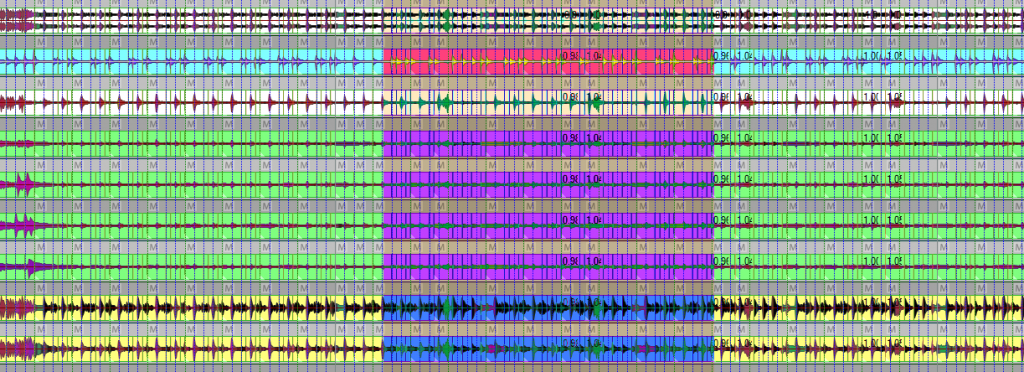Welcome to our drum editing service page!

Right now, we do drum editing for $25 dollars per song, with a three day turnaround and 2 revisions if needed.
How To
If you are interested, email me a link to an archive set up as described:
- Include the Tempo (or tempo map if needed)
- Include All drum tracks starting from the same point of time, in whatever sample rate and bit depth they were recorded in.
- Instructions on how strict you want the timing to be, every single possible percussive element to the grid, or just the measure starts (and any egregious errors) lined up. Be descriptive and I will try my hardest to accommodate your desires.
- Put all of the necessary files in a zip, rar, or archive format of choice.
- Send me a link to the files. You could use Dropbox, YouSendIt or whichever file sharing site works best for you
About pipelineaudio’s drum editing experience:
I started editing drums as far as they could go, back in the day by slicing up 2″ tape and crossing my fingers that this rough, archaic form of editing could result in a passable sound. We spent a lot of time back then figuring out ways of building perfect trigger tracks to deal with the limitations of what razorblades and blue tape could do. Schemes of locking MDM’s and 3324’s to the master to carry the triggers. Running triggers off the sync head. Slaving away over a Russian Dragon and still punching in and out trigger blips by hand! But I got pretty good at even that.
As the years went on, I started bringing computers into the studio. The industry scoffed, but I used early wave editors to build the ideal trigger tracks, and (as sad as it sounds now) flew them back to MDM’s to lock to the master machines. They said “you can’t edit drums on a computer”.
Yet I did.
As my techniques seemed to result in no airplanes falling out of the sky, it changed to “ok, you can do some rough edits, but you certainly can’t edit anything while there is a cymbal playing”
Yet I did.
As the 90’s ended, I collaborated with hardware and software developers to make triggering better and make drum editing itself more viable, possible, and dare I say, palatable. There was very little of hands on, two way communication between those of us in the field, who had to do this type of thing for a living, in front of customers watching their dollars tick away on a pricey studio clock, and the developers who were making the products we had to stake our livelihoods on. I did all I could to change that, and would talk, email, phone or even visit any C++ coder who I could ambush.
I spent the next few years creating a hand drawn block of pages describing my ideal drum editing platform, as well as a DAW that would feel extremely familiar to anyone who was used to working out problems with a screwdriver, a multimeter, a handful of connectors and of course, a soldering iron. After many false starts, I met computer programming superstar Justin Frankel and my dream drum editor (and DAW!), REAPER was born.
I was created to edit drums.
I will edit YOUR drums.